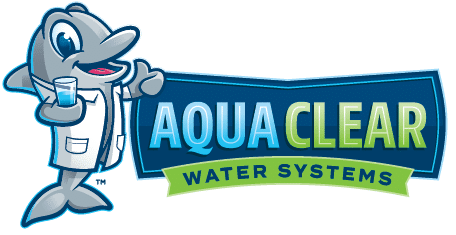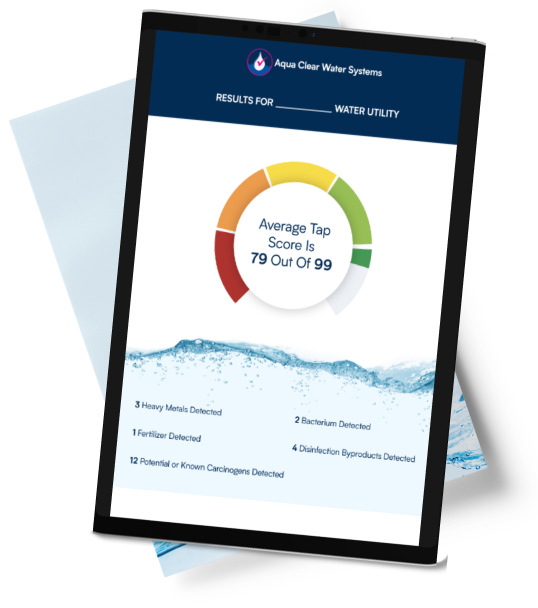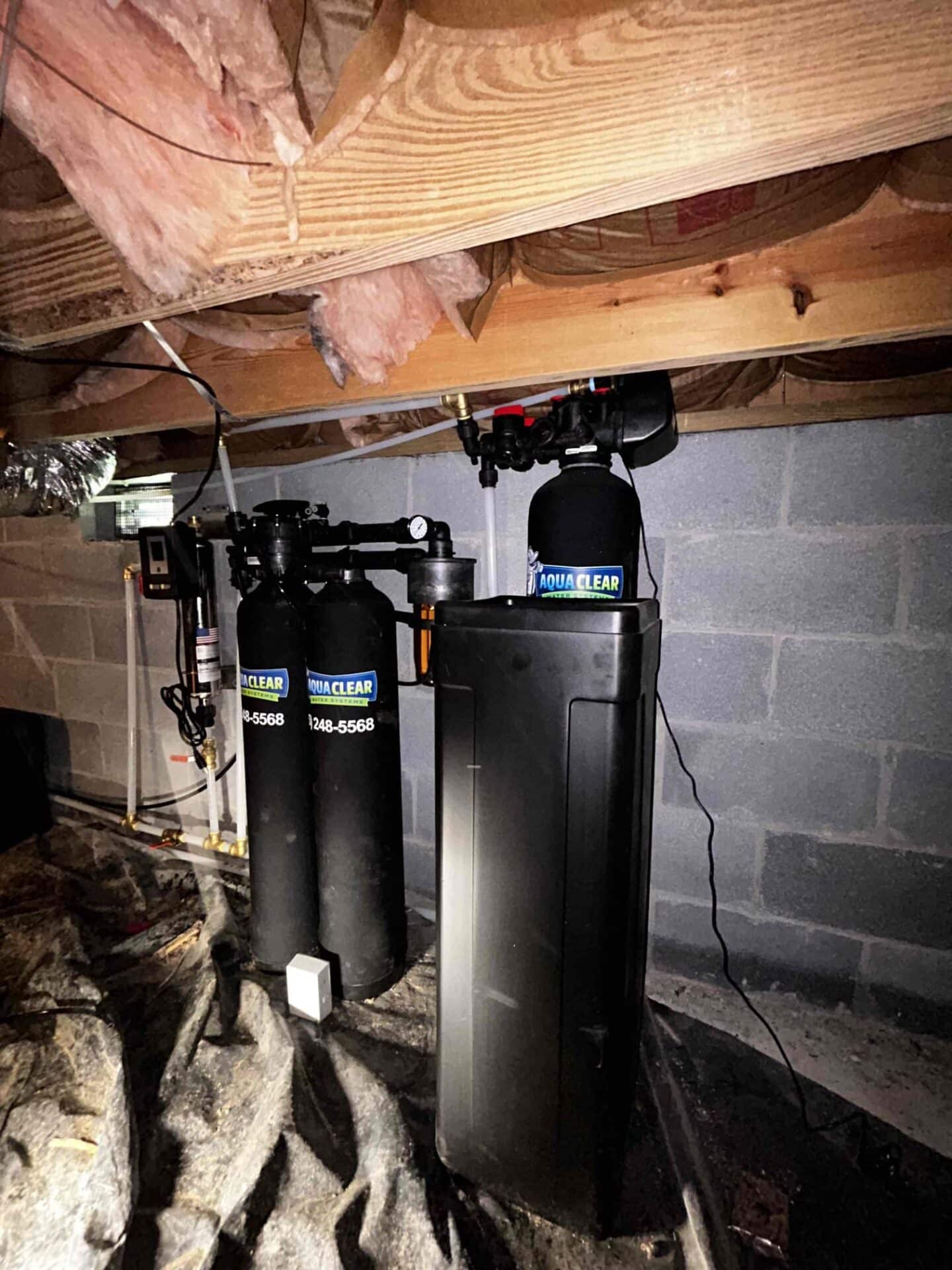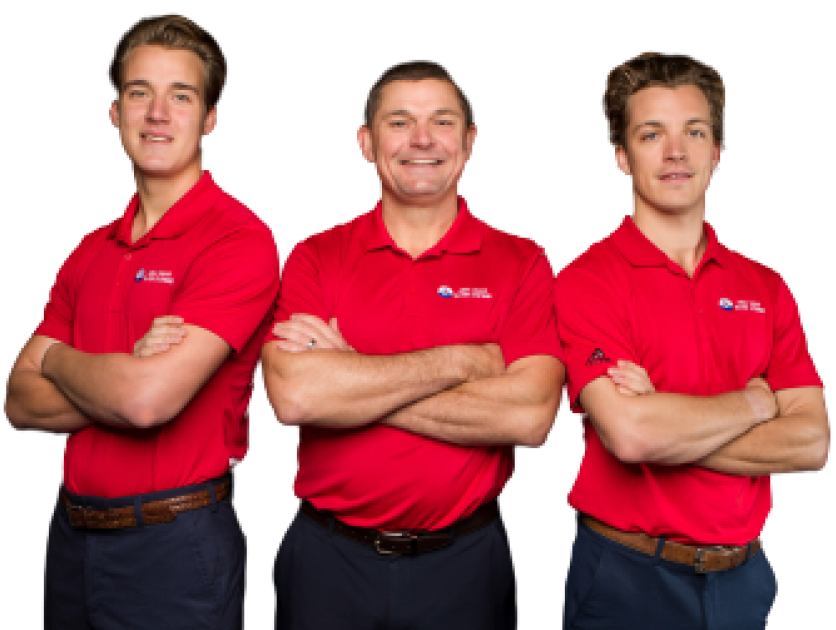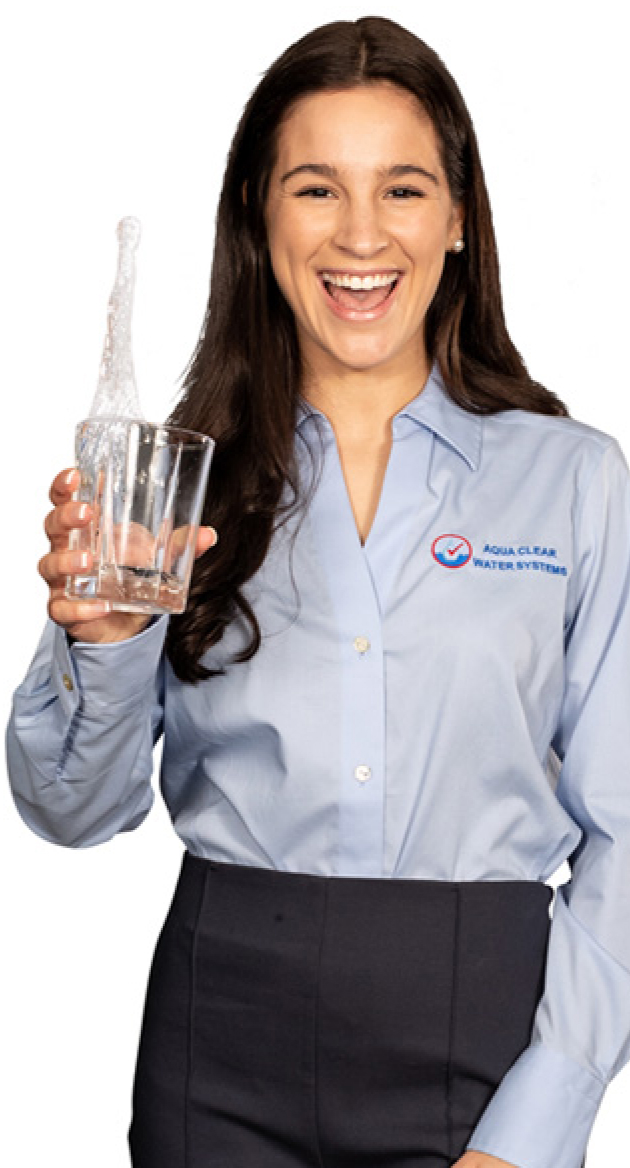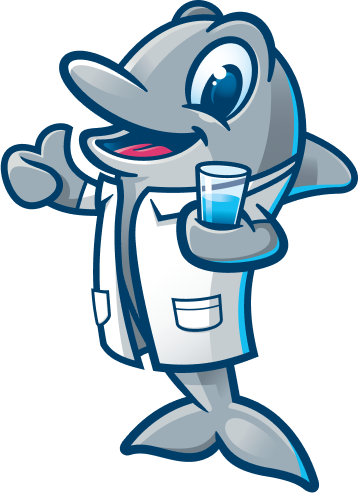All of these are non-electric, demand-operated water softening systems in Kinetico’s “Premier XP” line. Key shared features:
- Non-electric operation: moving water powers them; no timers/clocks/computers to set. Aqua Clear Water Systems+1
- “XP” calibration/feature set: more precise tuning to water conditions for efficiency, savings (salt, water) and waste reduction. Aqua Clear Water Systems+2Aqua Clear Water Systems+2
- Demand-based regeneration: they track actual water usage so the resin regenerates only when needed (vs fixed intervals). Less waste. Aqua Clear Water Systems+1
- Twin tanks: One tank can be softening while the other regenerates, meaning continuous soft water availability. Aqua Clear Water Systems+1
- Ability to remove hardness; also, soluble iron in many cases. Some models (especially in the Q850 & overdrive (“OD”) variants) include options or configurations for also dealing with chlorine or chloramine (via carbon/Chloraban), etc. Aqua Clear Water Systems+1
So these aren’t single “economy” units, but fairly capable systems meant to cover larger demands, more severe water hardness, or households wanting more durable/heavy duty softening with efficient operation.
Key specifications & performance differences
From the Performance Data Sheet and manual, here are relevant spec differences of these models. Aqua Clear Water Systems+1
| Model | Typical Service Flow Rate* | Resin Volume / Tanks | Capacity per Cycle (grains) | Grains per Pound of Salt | Salt Used per Regeneration Cycle | Best Fit / Use Case |
| S150XP | ~ 9 gpm at 15 psi drop Aqua Clear Water Systems | ~ 0.47 cu ft resin (single/twin?) Aqua Clear Water Systems | ~ 6,700-7,000 grains Aqua Clear Water Systems | ~ 4,485 grains per lb salt (at low salt dose) Aqua Clear Water Systems | ~ 1.5 lbs salt per cycle Aqua Clear Water Systems | Smaller households; modest hardness; moderate flows |
| S650XP | ~ 11.5 gpm (depending on pressure drop) Aqua Clear Water Systems | Much more resin, larger tanks Aqua Clear Water Systems | ~ 35,000+ grains (precise number depends on hardness & cycle) Aqua Clear Water Systems | somewhat lower grains/lb salt (varies) than the smallest models, but still efficient Aqua Clear Water Systems | Salt usage per regen is higher (due to larger exchange) but more “soft water output per lb salt” in many cases Aqua Clear Water Systems | Larger homes, high hardness, multiple bathrooms/appliances, high flow needs |
| Q850XP | Similar service flow rates for big demand; also configured for overdrive / combination (carbon or Chloraban) to deal with dechlorination or chloramine in addition to hardness. Aqua Clear Water Systems+1 | dual tanks plus optionally activated carbon or Chloraban in the OD variants Aqua Clear Water Systems | Very high capacity (comparable or higher than S650XP depending on configuration) Aqua Clear Water Systems | Efficient in terms of grains per lb salt especially under the low salt dose / low hardness calibration; overdrive settings can affect performance. Aqua Clear Water Systems+1 | Has higher salt and water usage when used to also filter chlorine/chloramine or when flow demands/regeneration demands are high; but the combination models allow dealing with more issues than purely hardness. Aqua Clear Water Systems | Homes with both hardness and issues like chlorine/chloramine in water, or larger households where both flow and continuous soft water + dechlorinated water are desirable. |
* “Flow rate at 15 psi drop” means the flow through the softener when pressure loss across it is 15 psi – so higher means less restriction.
Also relevant are the “grain capacity per pound of salt”, which is a measure of efficiency: how much hardness it removes (grains) per lb salt. Higher is better (less salt used per unit of hardness removed) if you can regenerate under those efficient conditions. For example, S150XP reaches ~ 4,485 grains/lb under low salt dosage. Larger models tend to drop in that efficiency number under typical/higher regeneration settings. Aqua Clear Water Systems
Pros & Cons: What are the trade-offs
Here are what you get, and what you might give up, for each model (and more generally as you scale up in capacity or complexity).
| Benefit / Advantage | Drawbacks / Things to Watch |
| All Premier XP models in this comparison | – Upfront cost tends to be higher (larger tanks, twin structure, non-electric controls etc).
– Requires space: footprint and plumbing connections more substantial. – Salt and water still required for regeneration; even efficient systems still consume both. – Maintenance (though modest) still needed: adding salt, possible media replacement in combo filters, occasional cleaning etc. |
| S150XP | + Lower cost, lower salt/water per regeneration, compact.
+ Good for small or medium households, moderate hardness. – May struggle if water demand spikes (e.g. many people doing laundry, showers etc at once). Flow rate lower, capacity lower. Less margin for future increases. |
| S650XP | + Much higher capacity and flow rate; better suited for larger homes or more intense usage.
+ More “buffer” so less frequent regeneration if you’re using more water. – Larger salt usage per regen (though efficiency may reduce cost per gallon softened). – More physical space needed; installation may be more complex; may cost more to service. |
| Q850XP (and OD / Overdrive / Combination versions) | + Includes options for dechlorination / chloramine removal – better for water with chemical disinfectants or odor/taste issues.
+ Overdrive features can deal with higher continuous demand and simultaneous flows better. + Very high capacity / better suited for demanding households or where both softening + removal of chlorine etc are priorities. – Higher cost up front. – Filters/carbon media will need occasional replacement depending on chlorine load. – More complexity (two media types, more plumbing; sometimes more head loss depending on filter state). – Possibly higher maintenance in chemical / media replacement, though not huge if water isn’t high in chlorine. |
Which model for which situation / what you should consider
To pick among them (or decide whether a smaller or larger model is better), you want to look at a few key factors:
- Household size / daily water usage
If you have a large family, lots of bathrooms, high simultaneous use (showers + laundry etc.), you need enough flow capacity so that you don’t notice a drop in pressure when multiple fixtures are open. - Water hardness (grains per gallon or similar)
The harder your water, the more “grains removed” the system has to handle per unit time. Higher hardness means more frequent regeneration, more salt/water use, unless you oversize. - Any chemical treatment needs
Do you have chlorine or chloramine in your water supply? If yes, a combo model (e.g. Q850 OD with carbon or Chloraban) is attractive. - Water pressure and plumbing constraints
If your plumbing / pressure is modest, a high-flow model might create issues. Also, consider the pressure drop of the unit. Oversizing can sometimes cause more loss. - Space & installation
Larger systems = more physical space. Twin tanks etc require more room. Also access for servicing (adding salt, replacing filters etc.). - Operating cost over time
Efficiency (grains per lb salt), how often regeneration happens, salt cost, and water used in regeneration all factor in. Even though bigger systems cost more up front, if they are more efficient, they may cost less per gallon of softened water over their life. - Future needs
If you expect your water usage to grow (more people, more bathrooms etc.), it may make sense to get a larger model to avoid needing to upgrade later.
Side-by-side: S150XP vs S650XP vs Q850XP
Putting it together, here’s how they compare more directly:
| Feature | S150XP | S650XP | Q850XP (non-OD / OD / combination variants) |
| Best for homes with 2-4 people, moderate hardness, limited peak simultaneous usage | ✔ | maybe overkill | possibly overkill unless additional chemical removal needed |
| Best for homes with 4-8+ people, heavy simultaneous use, higher hardness levels | may be strained | ✔ | ✔ (especially if need dechlorination or odor / taste issues) |
| Ideal if your source water has chlorine / chloramine / bad taste/odor in addition to hardness | Less needed unless you want “future proofing” | Good, but would need combo variant to get chemical removal | Best; Q850 OD / combination gives this capability built-in |
| Cost / installation complexity | Lowest among these three | Higher; more salt, more physical size, more plumbing considerations | Highest, especially for combination variants; more media, more maintenance required for carbon etc. |
| Operating cost per gallon softened (including salt, water, media replacement) | Low for light use; becomes less efficient if overloaded or frequent regen | Better amortized over high usage – less frequent regeneration per gallon used | Similar to S650 for hardness part; plus media replacement and maybe filter costs if chemical removal is heavy burden |
Key differences & what “XP” brings
- The XP feature gives more precise calibration to water hardness, usage profile, etc., which improves efficiency (less wasted regeneration, better salt efficiency).
- The twin tank design ensures you don’t lose soft water when regeneration is occurring. That’s a big benefit in households that can’t afford any downtime.
- “Overdrive” / OD / combination models add chemical removal (chlorine/chloramine) via activated carbon or special media (e.g. Chloraban) to address taste, smell, and skin/hair effects beyond just hardness.
So “XP” is about smarter, more efficient softening; “OD / Overdrive / combo” is about handling more than just hardness.
Practical recommendations: Which to choose when
Here are some example scenarios + which model makes the most sense in each:
| Scenario | Best Model(s) | Why |
| Small family (say 3-4 people), moderate hardness (say 8-15 grains / gallon), one or two bathrooms, occasional peak usage (e.g. laundry) | S150XP | Sufficient capacity & flow, lowest cost, simpler setup; you’ll get good efficiency and low maintenance. |
| Larger home (5-7 people), high hardness (>20 gpg), 2-3 bathrooms + frequent laundry / dishwasher use, multiple fixtures in use at once | S650XP | Higher flow capacity, larger grain capacity so fewer regenerations, better suited to high demand. |
| Home with hardness and noticeable chlorine or chloramine odor/taste, or if you care a lot about water quality for skin/hair etc.; mid or large household | Q850XP (OD / combination variant if chemical treatment needed) | You get both softening and de-chlorination; good flow; better resilience to multiple demands. |
| If you plan to expand your household or water usage (e.g. adding bathrooms, more occupants) in the future | Lean toward S650XP or Q850XP, so you have headroom. | Oversized slightly now saves cost & hassle later. |
What to watch out for / potential pitfalls
- Ensure the water hardness test is accurate: getting grains/gallon wrong can lead to undersizing or overspending.
- Check your plumbing’s pressure and flow: ensure the unit’s flow rating won’t unduly drop pressure when several faucets are open.
- Space & installation logistics: twin tanks, salt tank, possible carbon media housing (with combo models) take space; access for maintenance.
- Chemical media replacement: in Q850 variants where you have activated carbon or Chloraban, those media need periodic replacement depending on how much chlorine/chloramine is in your water – factor that into long-term costs.
- Salt usage & type: even efficient systems use salt; consider salt quality, storage, ease of refilling.
- Warranty & dealer/service support: make sure the dealer can service, parts are available; check what is covered under warranty. The Premier XP line has 10-yr limited warranty on valves/media/tanks etc. Aqua Clear Water Systems+1
Example Scenarios & Recommendations
1. Young Family in a Starter Home
- Home size: 1,600 sq ft
- People: 3 (two adults, one child)
- Water hardness: ~12 grains per gallon
- Issues: No chlorine smell, just hard water
- Peak demand: Usually 1–2 bathrooms in use, occasional laundry while shower runs
Best fit: S150XP
- It’s compact, efficient, and budget-friendly.
- Provides continuous soft water without wasting salt or water.
- Perfect for smaller families with moderate hardness.
2. Busy Household with Multiple Bathrooms
- Home size: 3,200 sq ft
- People: 6 (four kids, two adults)
- Water hardness: ~20 grains per gallon
- Issues: Very hard water but no chlorine smell
- Peak demand: Three showers and laundry can run at once
Best fit: S650XP
- Higher flow rate and capacity ensures no pressure drop when multiple fixtures are running.
- Large salt efficiency for high-demand homes.
- Fewer regenerations needed, which saves effort and maintenance.
3. Suburban Family with Chlorine Issues
- Home size: 2,700 sq ft
- People: 4 (two adults, two teens)
- Water hardness: ~15 grains per gallon
- Issues: Noticeable chlorine taste and odor from municipal water
- Peak demand: Two showers + dishwasher or laundry at the same time
Best fit: Q850XP (OD Combination with Chloraban or Carbon)
- Handles hardness and removes chlorine/chloramine for better taste, smell, and skin comfort.
- Enough flow capacity for a family with teens using lots of water.
- Great long-term option since it improves both water quality and softness.
Bottom line
If I were to summarize:
- S150XP is great if you have moderate hardness, a moderately sized house, want efficiency with lower cost, and don’t need a huge flow reserve.
- S650XP is what you go with when usage is high, multiple fixtures in simultaneous use, you want fewer regenerations, larger capacity.
Q850XP is for those who need everything: high capacity, soft water and treatment for chlorine/chloramine or odorous / taste issues, continuous flow, etc
